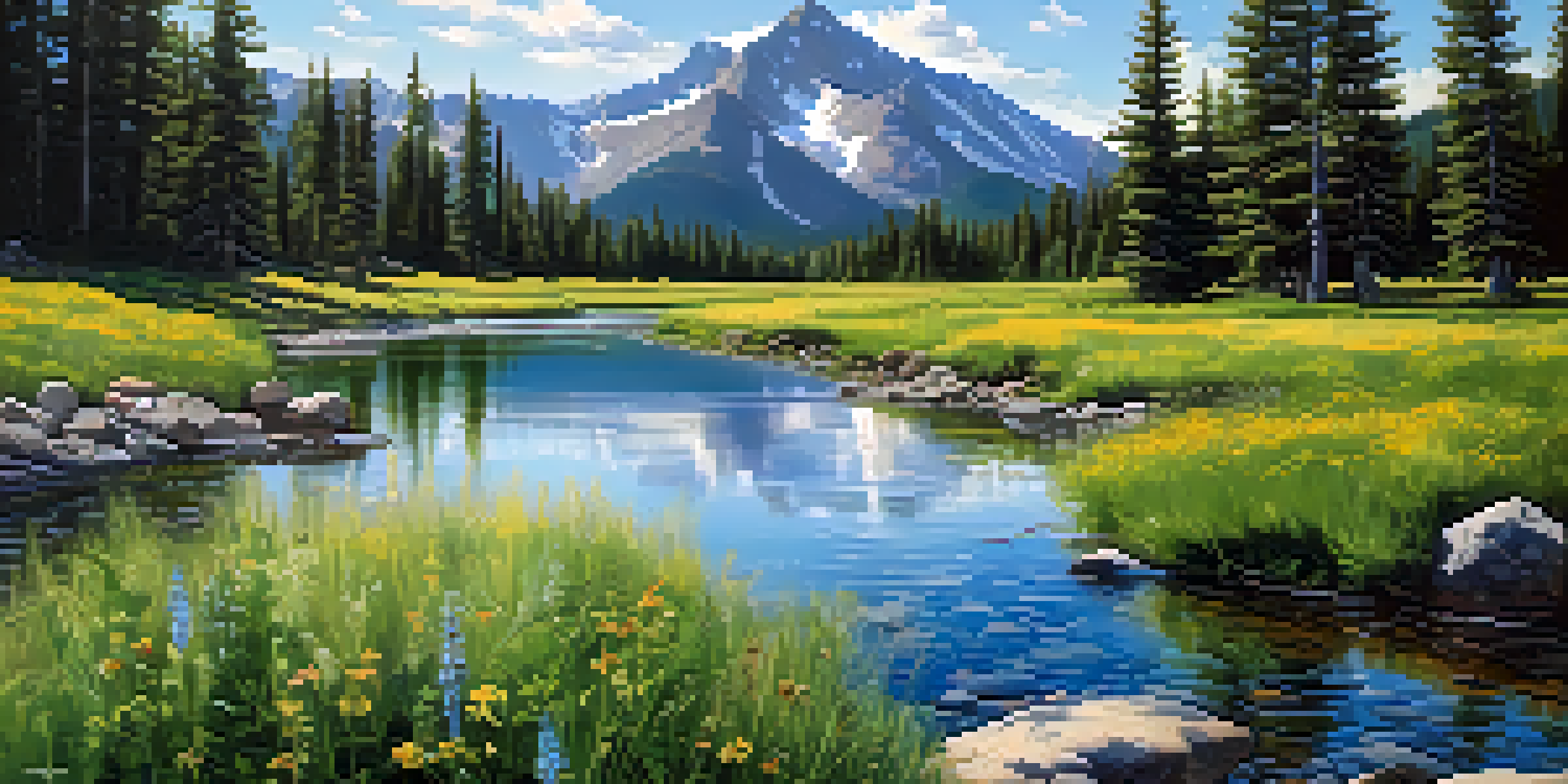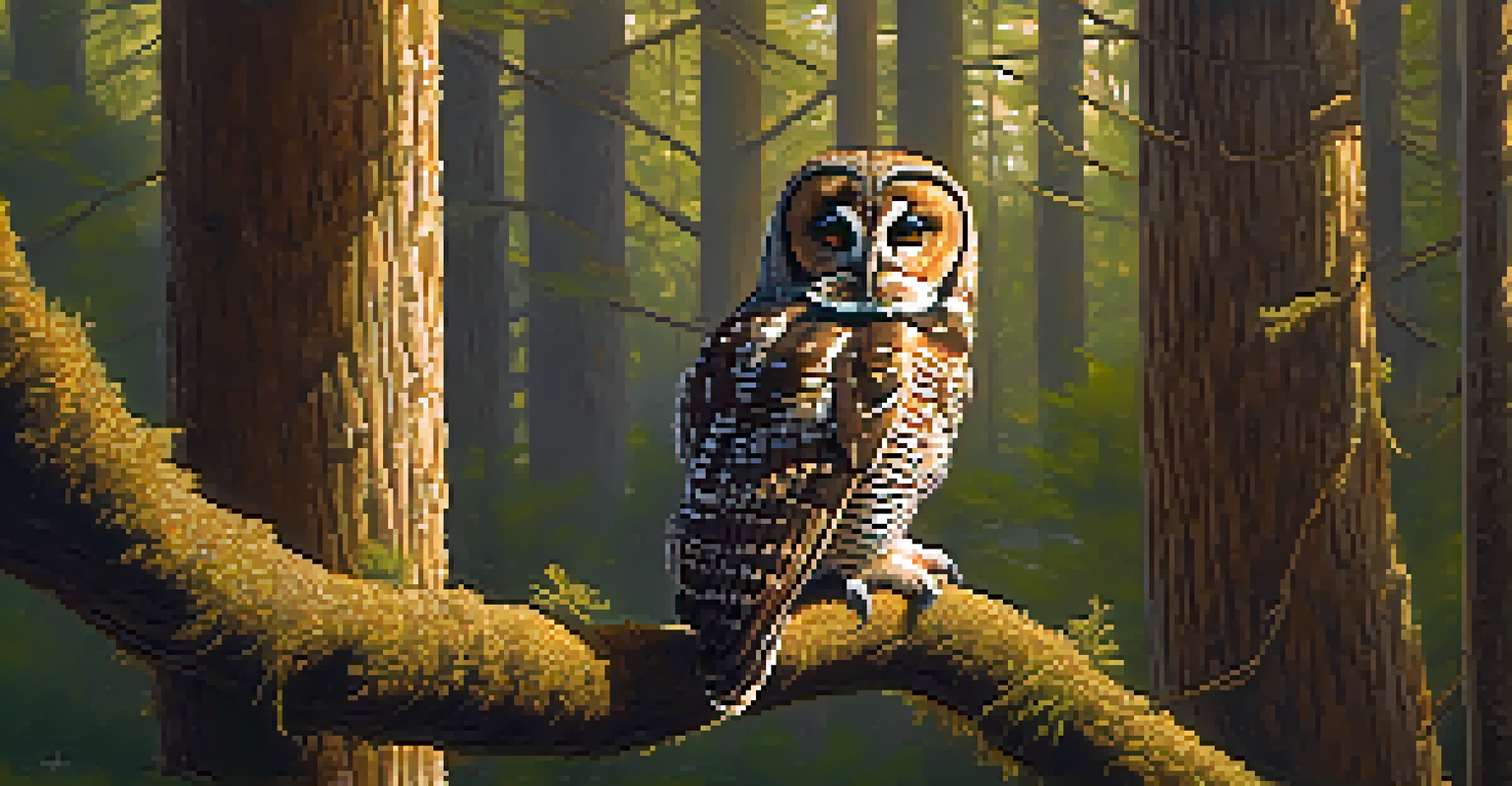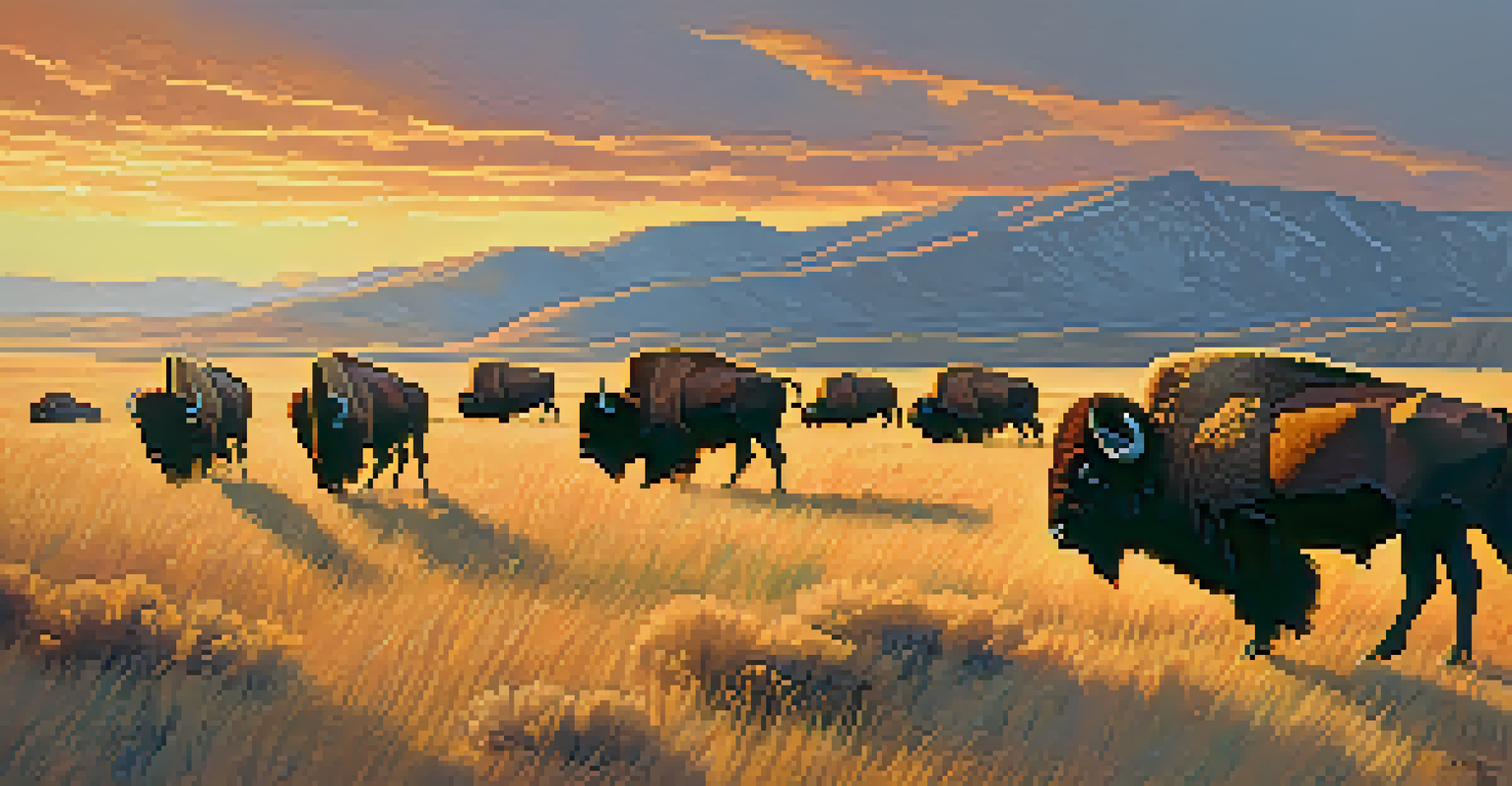Top Species Under Threat in Colorado and Conservation Efforts

Introduction to Colorado's Unique Biodiversity
Colorado is a state rich in biodiversity, home to a variety of ecosystems ranging from alpine tundras to desert landscapes. This diverse habitat supports numerous species, some of which are facing significant threats. Understanding the unique wildlife that calls Colorado home is essential for appreciating the current conservation efforts.
The future will either be green or not at all.
The state's varied climate and geography provide a sanctuary for many animals and plants, making it a crucial area for biodiversity. However, human activities such as urban development, climate change, and pollution are taking a toll on these species. As we delve into the specific species at risk, we can better grasp the importance of conservation initiatives.
By highlighting the unique species and the challenges they face, we can foster a deeper connection to Colorado's natural heritage. This connection is vital for rallying support for conservation efforts and ensuring a sustainable future for these remarkable creatures.
Endangered Species: The Colorado River Cutthroat Trout
The Colorado River cutthroat trout, a native fish species, is a prime example of wildlife at risk. Once abundant in the state's rivers and streams, it has faced severe population declines due to habitat degradation and competition with non-native species. Conservationists have made significant strides in restoring its habitats, but challenges remain.

Efforts such as reintroducing cutthroat trout into historical waters and improving stream habitats have been pivotal. These initiatives not only aim to boost the fish population but also enhance the overall health of aquatic ecosystems. Community involvement in these efforts is crucial for their long-term success.
Colorado's Biodiversity at Risk
Colorado's unique ecosystems are threatened by human activities, making conservation efforts essential for protecting its diverse wildlife.
Raising awareness about the importance of preserving this unique trout can inspire more people to participate in local conservation projects. As a living symbol of Colorado's natural heritage, protecting the Colorado River cutthroat trout is vital for maintaining the integrity of the region's waterways.
The Plight of the Mexican Spotted Owl
The Mexican spotted owl is another species facing significant threats in Colorado, primarily due to habitat loss. As a nocturnal bird that relies on old-growth forests, its survival is closely tied to the health of these ecosystems. Logging, wildfires, and climate change have all contributed to the decline of suitable habitats for this majestic owl.
In every walk with nature one receives far more than he seeks.
Conservation efforts focus on habitat preservation and restoration, which are essential for the owl's recovery. Organizations are working to create protected areas and implement forest management practices that benefit both the owl and its ecosystem. Raising awareness about the plight of the Mexican spotted owl can help garner public support for these initiatives.
Understanding the role of the Mexican spotted owl in the ecosystem is vital for its conservation. As a top predator, its presence indicates a healthy environment, making its protection crucial for the overall balance of Colorado's wildlife.
The Struggle of the Plains Bison
Once roaming the plains in massive herds, the plains bison faced near extinction due to overhunting and habitat loss. Today, conservation efforts aim to restore their populations and reintroduce them to their native grasslands. These efforts not only benefit the bison but also help maintain the ecological balance of the grassland ecosystems they inhabit.
Conservation groups are working tirelessly to establish sustainable bison populations through breeding programs and habitat restoration. By involving local communities in these efforts, they create a sense of stewardship for the plains bison. This approach helps educate the public about the bison's cultural and ecological significance.
Community Engagement is Crucial
Local communities play a vital role in conservation through hands-on support and innovative solutions for preserving wildlife.
The plains bison serves as a reminder of the resilience of nature and the importance of conservation. By protecting this iconic species, we ensure that future generations can experience the incredible wildlife of Colorado.
The Vulnerable Greenback Cutthroat Trout
The greenback cutthroat trout, Colorado's state fish, is classified as a threatened species due to habitat loss and competition with non-native fish. Once thought to be extinct, conservationists have worked diligently to reestablish its populations in the wild. Their efforts include habitat restoration, breeding programs, and community engagement.
One successful strategy has been the relocation of greenback cutthroat trout to pristine waters that have been cleared of non-native species. This has allowed them to thrive in their natural habitats once again. Local fishing communities are encouraged to practice responsible fishing to support these conservation efforts.
The greenback cutthroat trout is not just a fish; it represents the successes and challenges of Colorado's conservation efforts. Protecting this species benefits not only the trout but also the entire ecosystem, highlighting the interconnectedness of wildlife.
Conservation Efforts: Protecting Colorado's Species
Conservation efforts in Colorado are multifaceted, involving government agencies, non-profits, and local communities. These collaborations aim to address the various threats facing endangered species, from habitat loss to climate change. By implementing science-based strategies, they work to restore populations and protect ecosystems.
Education and outreach play a crucial role in these efforts, as engaging the public can lead to greater support for conservation initiatives. Programs that involve citizen scientists help gather valuable data while fostering a sense of ownership over local wildlife. The more people know about these species and their struggles, the more likely they are to contribute to their protection.
Endangered Species Need Our Help
Various species in Colorado, like the Colorado River cutthroat trout and the Mexican spotted owl, are facing significant threats that require immediate conservation action.
Overall, protecting Colorado's threatened species requires a collective effort and a commitment to sustainable practices. By uniting individuals, organizations, and government bodies, we can create a more resilient future for the state's incredible wildlife.
The Role of Community in Conservation
Community involvement is essential for successful conservation in Colorado. Local volunteers and organizations are often the backbone of many conservation projects, providing hands-on support for habitat restoration and species monitoring. Their dedication helps raise awareness and foster a culture of conservation within their communities.
Engaging local communities can also lead to innovative solutions for conservation challenges. Workshops, events, and educational programs can empower individuals to take action in their own backyards. By participating in citizen science projects, residents can contribute to data collection, helping inform future conservation strategies.

Building a community around conservation creates a shared sense of purpose and responsibility. When people feel connected to their environment and the species that inhabit it, they are more likely to advocate for their protection.
Conclusion: A Call to Action for Conservation
As we've explored, Colorado's unique species face numerous threats that require our attention and action. Conservation efforts are making a difference, but they need our support to continue. Whether through volunteering, donating, or simply spreading the word, everyone can play a role in protecting Colorado's wildlife.
Understanding the interconnectedness of ecosystems can inspire us to take a more active role in conservation. By recognizing that our actions impact the environment, we can make informed choices that benefit both wildlife and ourselves. Together, we can create a sustainable future for Colorado's unique species.
In conclusion, the preservation of Colorado's biodiversity is a collective responsibility. Let’s join hands in supporting conservation efforts and ensuring that future generations can enjoy the rich natural heritage of this beautiful state.